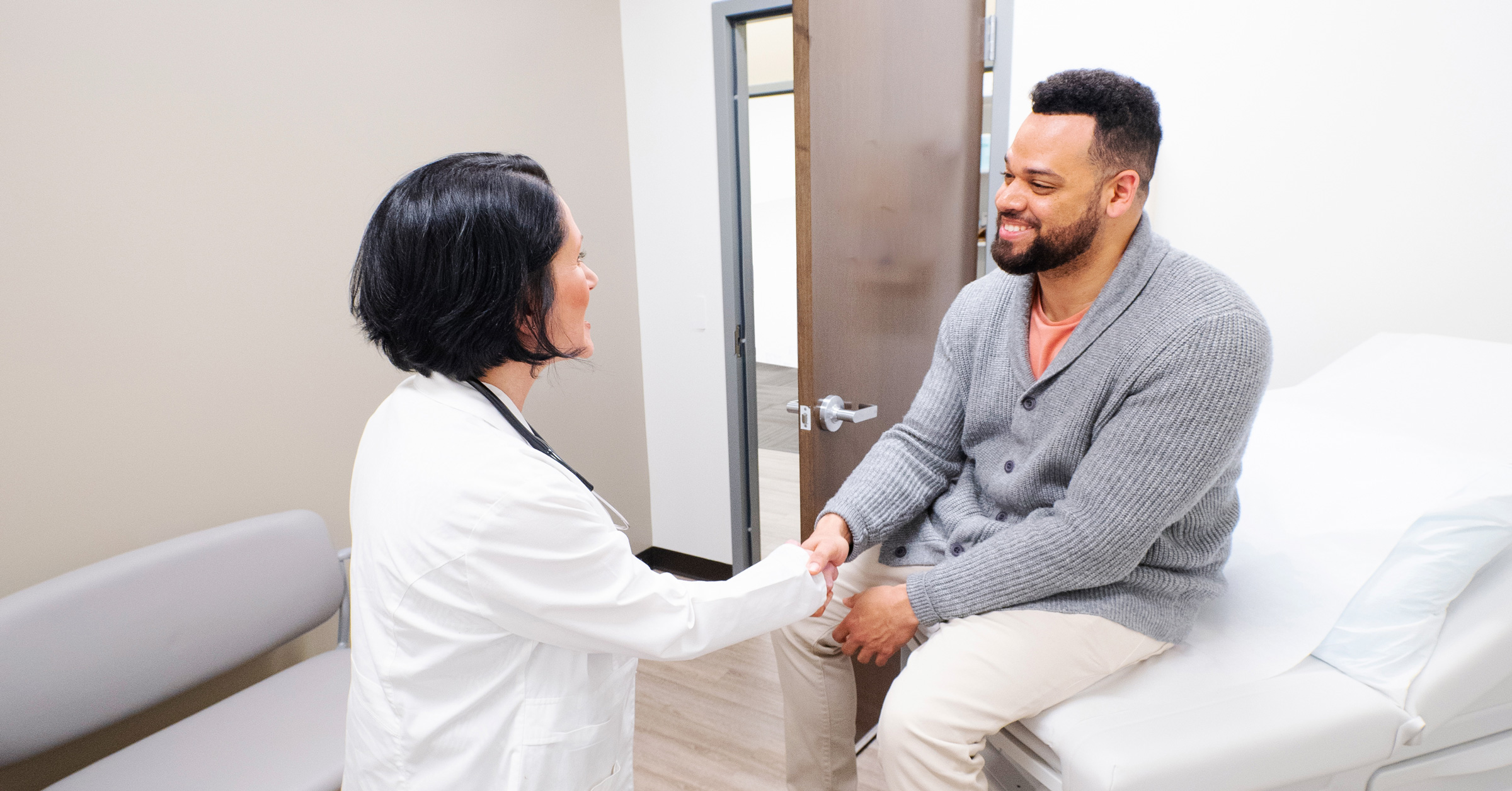When you think about a traditional patient healthcare journey, does the word disconnected come to mind? First, you need to find a doctor who is taking new patients. Then you call their office, often waiting several minutes before being able to speak to someone about scheduling an appointment. Once you have an appointment, you may have to wait up to two weeks before you can see the physician. After the appointment, you may not hear back from the doctor until it is time to schedule your annual exam or may never hear back until you reach out for additional care.
Unfortunately, in a traditional primary care setting, it’s not uncommon for things to fall through the cracks, and patients may feel confused or frustrated about how they can be more proactive in managing their health. Employers are in turn affected by the high cost of healthcare for their employees. It’s one of the reasons why employers are offering onsite or near-site employee health centers and virtual healthcare. This type of care is not only easy to access, but it’s personalized to help employees get healthier. While every employee’s journey will vary, there are 5 common steps in an employer-sponsored healthcare setting.
- Employees will receive education and promotion about employer healthcare services.
- Employees can schedule appointments with ease.
- Employees will experience personalized healthcare.
- Care teams follow up with employees to help them improve health outcomes.
- Employees maintain a healthy lifestyle by working with the care team throughout the year.
Download the infographic above to follow the care journey for 3 Marathon Health members, and read the steps below to understand what’s included in personalized employee healthcare journey:
Step 1 – Employees Receive Education and Promotion About Healthcare Services
Whether you hire someone or implement a new health initiative, employees will begin their healthcare journey by receiving educational marketing materials about the health and wellness services available to them. For example, they may receive an email about an onsite wellness screening at your employer-sponsored health center or a postcard in the mail about the types of services available to them from their employee-sponsored healthcare team.
Throughout the year, employees may get reminders about the health services offered, any wellness incentives you offer to encourage utilization, or details about the importance of preventive care like a biometric screening.
Step 2 – Employees Schedule Healthcare Appointments with Ease
If you’ve ever tried scheduling an appointment with a traditional primary care provider and have been frustrated by phone trees and being put on hold, you understand the importance of convenience.
Employer-sponsored healthcare providers like Marathon Health have found a solution by creating an appointment scheduling tool inside their member portal that allows employees the convenience of scheduling an appointment on their computer or mobile device. Employees can browse all the available appointment times and schedule an appointment in just a few minutes. They can also reschedule or cancel an appointment without being put on hold.
Step 3 – Employees Experience Personalized Healthcare
Whether they’re visiting the employee health center for a health coaching session, flu shot or sinus infection, employees will have additional face time with the healthcare team – up to 30 minutes or more. This extra time allows them to discuss any questions or concerns they have. The care team can also help your employees create a plan to achieve their health goals and assist them in deciding the next steps in their healthcare journey.
When a referral outside of the employee health center is needed, a referral coordinator will contact employees within 24 hours to find the best provider or health service, like an MRI, at the best price.
Marathon Health CEO and Co-founder Jeff Wells, MD, says employer-sponsored healthcare differs from traditional primary care because it focuses on improving patients’ lives. “By connecting a member to a trusted primary care team that’s accountable to driving outcomes, we can really help employees transform their lives,” Wells says.
Step 4 – Care Teams Follow up to Improve Employee Health Outcomes
If after a wellness screening an employee realizes they are prediabetic and are ready to address their health issues, care teams encourage employees to follow up with a health coach or a certified diabetes educator. During follow-up visits, employees will learn how to lower cholesterol and blood sugar levels and set goals they want to reach, while the health coach will provide guidance and encouragement along the way.
Michael Huang, a physician at Marathon Health, says that in the traditional primary care structure employees are often seen as just another number in the system. “We really want to provide a high level of care to our patients and when things are rushed, it’s easy for people to feel left behind and not receive the level of care they deserve,” Huang says.
When Marathon Health patient April Leavy developed osteoporosis after undergoing chemotherapy treatments, she started seeing a registered nurse and health coach at her employer-sponsored health center. “Caring for myself was difficult while managing pain associated with surgery and recovery and I couldn’t use either arm and developed depression and anxiety,” Leavy says. “I began seeing a registered nurse and health coach who helped me develop relaxation and stress management techniques. Having recently moved from the Northeast, they provided me with a sense of calm and belonging as I adjusted to my new environment and worked toward recovery. Now I incorporate medication, exercise, aroma therapy, and humor into my daily life.”
Step 5 – Employees Maintain a Healthy Lifestyle with the Help of their Care Team
Whether it’s scheduling a biometric screening once a year or attending lunch and learns hosted by the health staff, employees need to continue to be proactive about managing their health. Employers should look for ways to encourage employees to continue to maintain healthy lifestyles through incentivized health challenges or to share their healthcare journey through the Healthy Like Me program.
Marathon Health member Phaedra Ginger says that her personalized healthcare journey has caused her to make her health a priority. “I was stuck in an unhealthy pattern,” Phaedra says. “I was diagnosed with asthma after visiting my employer-sponsored Marathon Health center. My clinicians prescribed me an inhaler and told me how I could access resources on the Member Portal to learn more about my condition. I committed to improving my overall health and started a regular exercise plan. I recently signed up for my first 5K race. I never thought in a million years I’d be able to jog that far, but I feel amazing and committed to continuing my journey.”
You might also like
Subscribe to our newsletter and stay on the cutting edge of worksite healthcare.











